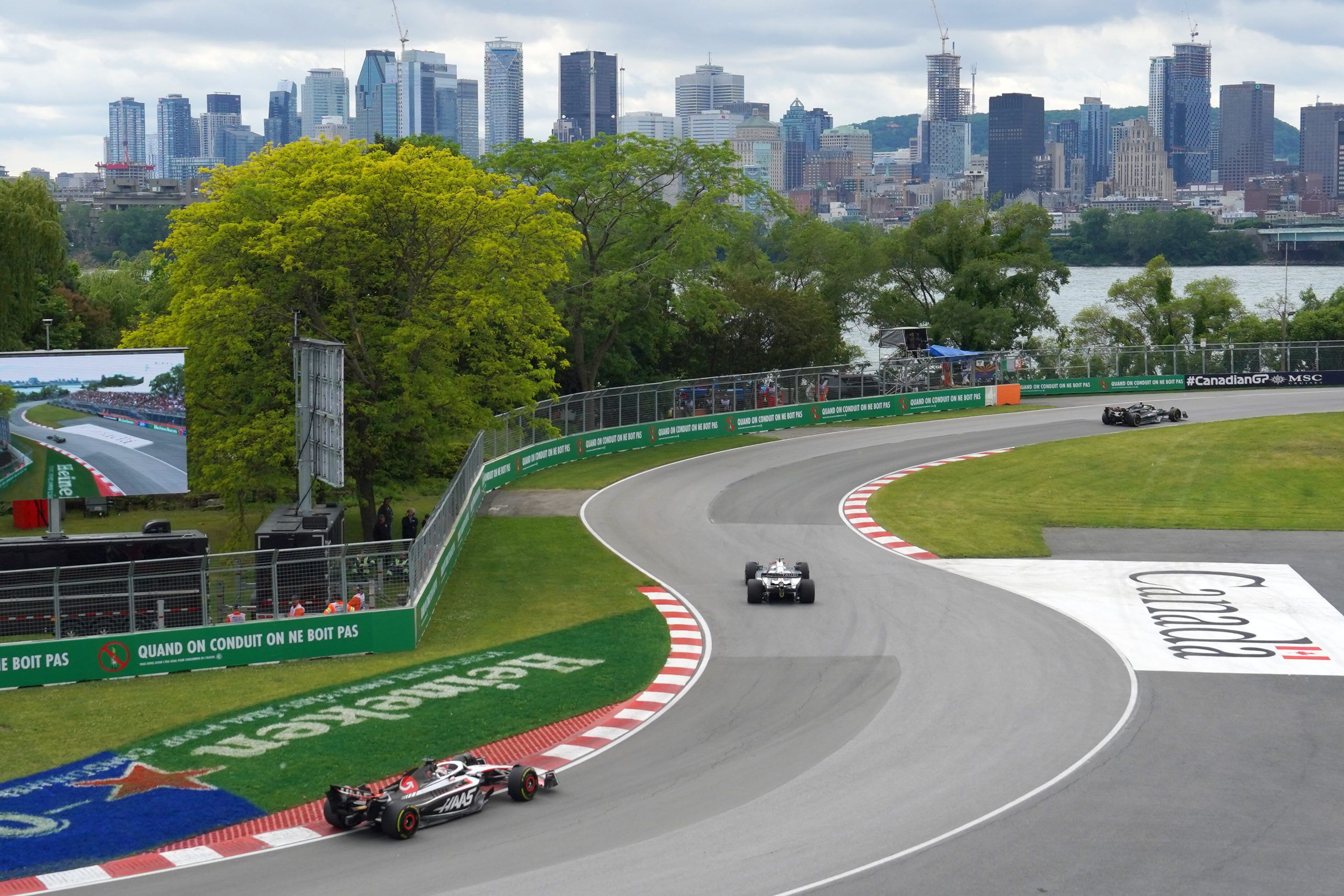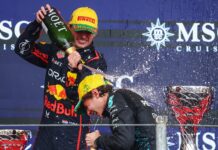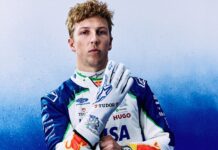The FIA has shared details regarding F1 Canadian GP with regards to track limits, changes to circuit, DRS zones and more.
The track limits for F1 Canadian GP is white lines as per FIA Race Directors’ note, but in addition they have given information about taking corners at Turn 1 and Turn 2, along with Turn 9 and Turn 14 – especially how to negotiate the run-offs.
- Any driver who fails to negotiate Turn 9 or Turn 14 and passes completely to the left of the orange apex kerb must keep completely to the left of the orange block/bollard on the exit of the corner and re-join the track at the far end of the asphalt run-off.
- Any driver who fails to negotiate with Turn 1 should re-join the track at the far end of the asphalt run-off at the entry of Turn 2.
In terms of the DRS zones, the detection for the first is 15m after Turn 5 with the activation being 95m after Turn 7. The detection for the second and third zones is at 110m after Turn 9, with the activation for second at 155m after Turn 12 and third’s at 70m after Turn 14.
With the whole track being resurfaced, there is host of changes made to the F1 Canadian GP circuit. The FIA shared a list of it which includes things about the run-offs, debris fence, pit exit and more, here’s the full list:
- The track has been fully resurfaced.
- All kerbs have been replaced with new kerbs of the same specifications.
- The track surface between Turn 7 and Turn 8 has been lowered to increase the clearance between track and the Concorde Bridge to min. 4.0 m.
- The opening before Turn 2 on LHS at Pit Exit has been moved a few meters further downstream.
- The access road into Turn 5 and Turn 7 has been asphalted.
- The run-off at Turn 8 has been rebuild with asphalt and grass. The walls have been realigned.
- The grasscrete behind the kerb in Turn 1, Turn 3 and Turn 6 has been replaced with concrete.
- All walls have been realigned to guarantee 1.0 m height.
- The walls at pit exit have realigned on LHS at Pit Exit.
- The debris fence on LHS after Turn 11 has been upgraded to 3.5 m height.
- All TSP have a min. height of 2.5 m.
- The white line between Turn 2 and Turn 3 on LHS has been moved closer to the wall (1.8 m).
- The white line between Turn 7 and Turn 8 on LHS has been moved closer to the wall (1.8 m)
Staying with the alignment change at pit exit, the FIA has expanded on the practice starts and how the cars have to behave in the pitlane. “Practice starts may be carried out at the pit exit on the left-hand side after the pit exit lights,” it stated.
Further to it, Article 34.8 SR noted:
(…) Any car(s) driven to the end of the pit lane prior to the start or re-start of a free practice session, qualifying session or sprint qualifying session must form up in a line in the fast lane and leave in the order they got there (…) It is noted that a car will be considered to be “in the fast lane” when a tyre has crossed the solid [white] line separating the fast lane from the inner lane, in this context crossing means that all of a tyre should be beyond the far side, with respect to the garages, of the line separating the fast lane from the inner lane.
For the avoidance of doubt, ISC Appendix L, Chapter IV, Article 5b) states that: Once a car has left its garage or pit stop position it should blend into the fast lane as soon as it is safe to do so, and without unnecessarily impeding cars which are already in the fast lane. Thus, after the start or re-start of a free practice session, qualifying session, or sprint qualifying session, if there is a suitable gap in a queue of cars in the fast lane, such that a driver can blend into the fast lane safely and without unnecessarily impeding cars already in the fast lane, they are free to do so.
Furthermore, it is noted that during a free practice session, qualifying session, or sprint qualifying session a car driving in the inner lane, parallel to the fast lane, will not be considered to have blended into the fast lane at the earliest opportunity. Additionally, ISC Appendix L, Chapter IV, Article 5d) states that: Cars in either the fast lane or working lane may not overtake other cars in the fast lane except in exceptional circumstances. In this context a “stopped car” is one which has an obvious mechanical problem.
As for the FIA stewards panel, it will be led by Felix Holter at F1 Canadian GP where his peers will be Loic Bacquelaine, Derek Warwick and Marcel Demers.
Here’s FIA Race Directors’ note: https://www.fia.com/sites/default/files/decision-document/2024%20Canadian%20Grand%20Prix%20-%20Race%20Director’s%20Event%20Notes.pdf
Here’s first look at F1 2026 regs
Here’s F1 drivers on Le Mans 24 drive
Here’s F1 drivers on yellow, red flag lap deletion
Here’s news on Emanuele Pirro being FIA Single-Seater President
Here’s F1, FIA on safety post Monaco GP crash
Here’s link to a F1 Discord channel, join in to interact



















